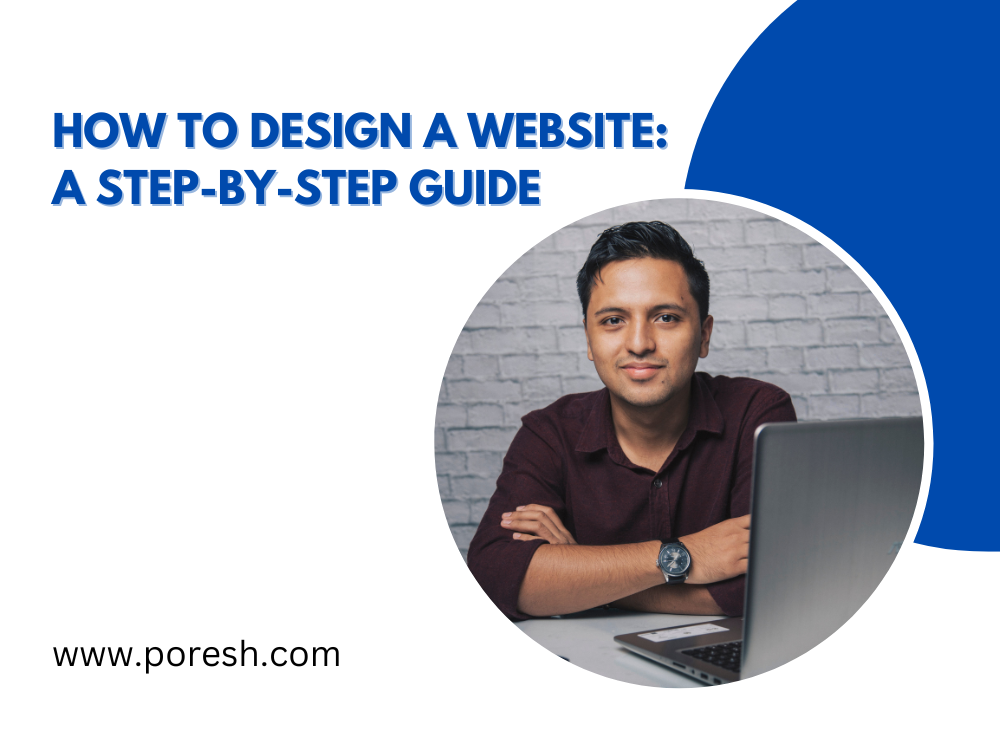How to Design a Website: A Step-by-Step Guide
Introduction
Creating a website can seem daunting, but with the right approach, it becomes an exciting and manageable task. Whether you’re a business owner, a freelancer, or simply want to create a personal blog, this guide will walk you through the steps to design a website that looks great and functions seamlessly.
Step 1: Define Your Purpose and Goals
Before diving into design, understand why you need a website. Ask yourself:
- What is the main purpose of my website? (e.g., selling products, providing information, showcasing a portfolio)
- Who is my target audience?
- What are my key goals? (e.g., increase sales, attract followers, provide resources)
Step 2: Plan Your Content
Outline the main sections and pages your website will have. Common pages include:
- Home
- About
- Services or Products
- Blog
- Contact
Create a sitemap to visualize the structure of your website. Plan the content for each page, ensuring it aligns with your goals and target audience.
Step 3: Choose a Platform
Select a website-building platform that fits your needs. Popular options include:
- WordPress: Highly customizable with thousands of themes and plugins.
- Wix: User-friendly with drag-and-drop features.
- Squarespace: Stylish templates with built-in features for small businesses.
- Shopify: Ideal for e-commerce websites.
Step 4: Select a Domain Name and Hosting
Your domain name is your website’s address on the internet (e.g., www.yourwebsite.com). Select a proper name that reflects your brand and is easy to remember.
Next, choose a hosting provider to store your website’s files and make them accessible on the internet. Reliable options include Bluehost, SiteGround, and HostGator.
Step 5: Choose a Template or Theme
Templates and themes provide a starting point for your design. Look for one that matches your aesthetic and functionality needs. Customization must to set your brand’s colors, fonts, and style for better reflection .
Step 6: Design Your Website Layout
Focus on creating a user-friendly layout:
- Navigation: Ensure your menu is easy to navigate. Include key pages and make it accessible from any page.
- Visual Hierarchy: Highlight important elements (like calls to action) by using larger fonts or different colors.
- Whitespace: Use mostly whitespace effectively to avoid clutter and improve readability.
Step 7: Add Content and Visuals
Populate your website with high-quality content and visuals:
- Text: Write clear, concise, and engaging text. Use common things i.e. headings, subheadings, and bullet points for readability.
- Images: Use high-resolution images that are relevant and professional. Consider stock photos or hiring a photographer.
- Videos: Embed videos to enhance user engagement. Ensure they are relevant and load quickly.
Step 8: Optimize for SEO
Search engine optimization (SEO) helps your website rank higher in search results:
- Keywords: Incorporate relevant keywords naturally into your content.
- Meta Descriptions: Craft engaging meta descriptions for every page.
- Alt Text: Use detailed alt text for images to enhance accessibility and SEO.
- Mobile Optimization: Make sure your website is mobile-friendly because search engines give preference to mobile-optimized sites.
Step 9: Test Your Website
Before launching, test your website to ensure everything works smoothly:
- Functionality: Check all links, forms, and interactive elements.
- Performance: Test load times and optimize for speed.
- Compatibility: Ensure your website looks good on different browsers and devices.
Step 10: Launch and Promote
Once you’re satisfied with your website, it’s time to launch:
- Announce Your Launch: Use social media, email newsletters, and other channels to announce your website.
- Monitor Performance: Use tools like Google Analytics to track visitors and gather insights.
- Update Regularly: Keep your content fresh and up-to-date to maintain user engagement and SEO rankings.
Conclusion
Designing a website involves careful planning, creativity, and attention to detail. By following these steps, you can create a professional and effective website that meets your goals and impresses your audience. Happy designing!


